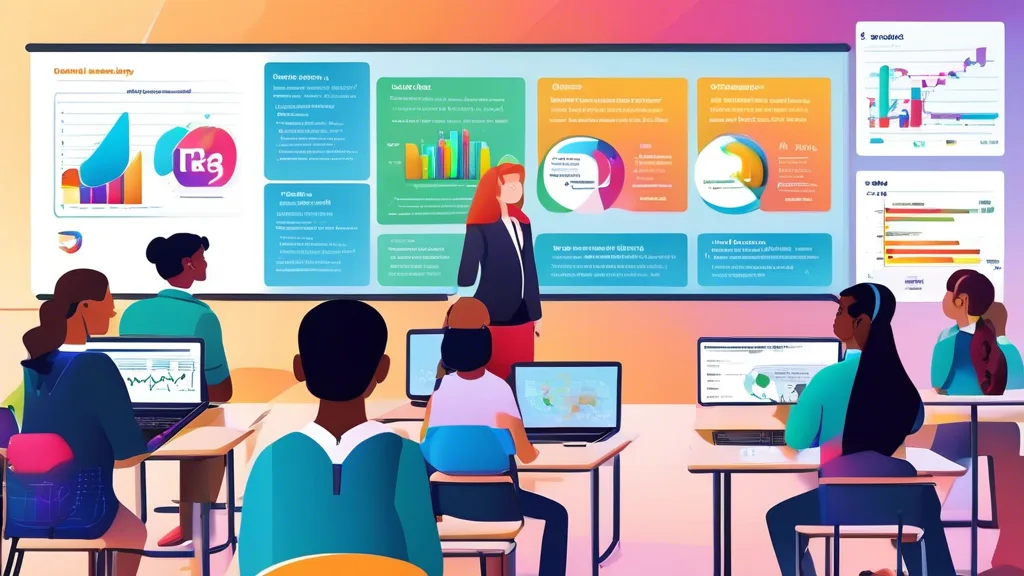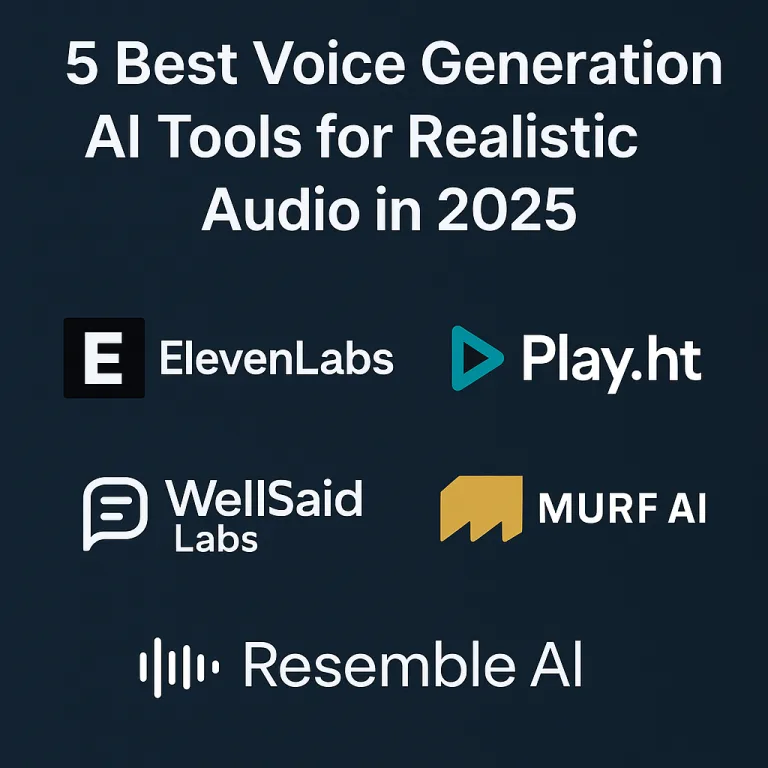Table of Contents
Introduction: The Rise of AI in Education
Artificial intelligence (AI) has become a transformative force across various sectors, and education is no exception. In classrooms, administrative offices, and virtual learning environments, AI is reshaping the way knowledge is imparted and acquired. By automating repetitive tasks, personalizing learning experiences, and unlocking new analytical capabilities, AI offers educators and students tools that were once inconceivable.
Advancements in machine learning and data processing enable AI systems to analyze enormous datasets, identifying patterns that humans might overlook. This has led to the development of adaptive learning platforms, capable of adjusting educational content based on a learner’s specific strengths and weaknesses. AI-powered tutors, for instance, provide one-on-one support to students by answering questions and explaining complex concepts in a conversational manner.
Schools are also leveraging AI for administrative purposes. Tasks such as grading, scheduling, and attendance tracking are being efficiently managed by AI algorithms. This frees up educators to focus on creative and interactive aspects of teaching. Additionally, predictive analytics is helping institutions forecast student performance and detect early warning signs of academic struggles, empowering interventions that are proactive rather than reactive.
AI technologies have made education more accessible by breaking down linguistic, geographical, and physical barriers. Automated translation tools, real-time transcription services, and voice-assisted devices enable students with diverse needs and backgrounds to engage more fully in learning. Furthermore, the presence of AI in education is fostering skills for the future, preparing students to navigate a tech-driven world.
Despite its benefits, AI adoption brings challenges, such as ethical concerns, data privacy, and equitable access. Stakeholders in education must address these issues to harness AI responsibly.
Personalized Learning: Tailoring Education to Individual Needs
Artificial intelligence is revolutionizing the approach to personalized learning by using data-driven methods to adapt instruction and curriculum to individual students. Unlike traditional one-size-fits-all teaching models, AI tools enable educators to identify specific strengths, weaknesses, and learning styles, ensuring that each student receives targeted support and resources. These systems analyze performance metrics, track progress, and predict future challenges, providing invaluable insights for customizing educational experiences.
AI-powered platforms such as intelligent tutoring systems and adaptive learning software adjust lesson difficulty, pacing, and content according to individual needs. Tools like these respond in real-time to a student’s comprehension level, offering explanations, additional practice, or alternative learning materials. For example, a student struggling with advanced math concepts may receive step-by-step tutorials or visuals to reinforce understanding, whereas a more advanced learner can skip repetitive exercises and move directly to challenging tasks.
The technology further supports personalized education by addressing accessibility for students with disabilities. Text-to-speech systems, gesture-based interfaces, and custom input devices enhance learning experiences for individuals with visual, auditory, or motor impairments. AI can ensure that educational content complies with universal design principles, creating an inclusive environment for all learners.
Instructors benefit significantly from AI-driven insights as well. By automating the analysis of student-generated data, educators can pinpoint patterns or gaps in knowledge development, allocating resources strategically and minimizing inefficiencies. This allows teachers to focus more on meaningful face-to-face interactions and mentoring rather than administrative tasks.
Effective personalization through AI promotes student engagement and fosters lifelong learning habits. With tailored lesson plans and learning paths, students are more likely to feel empowered, motivated, and capable of mastering complex subjects over time.
AI-Powered Learning Tools Transforming Classrooms
Artificial Intelligence is reshaping educational environments by introducing tools that amplify learning experiences for both students and teachers. AI-powered learning tools offer personalized solutions, adaptive technologies, and efficient methods tailored to meet the diverse needs of modern academic settings.
Key Features of AI Learning Tools
AI-driven platforms excel in the ability to individualize lesson plans and tailor educational content. These tools analyze student performance in real-time, identifying areas of struggle while suggesting targeted resources. Furthermore, they employ machine learning algorithms to adapt curriculum elements dynamically, ensuring optimal engagement and comprehension. This level of personalization empowers teachers to focus on fostering deeper academic connections.
Enhancing Student Learning Through AI
AI enhances student engagement by enabling interactive, hands-on learning experiences through simulations and visualizations. Tools such as virtual tutors specialize in providing 24/7 assistance by breaking down complex topics into manageable pieces. Incorporating speech recognition and natural language processing (NLP), AI creates immersive environments where students can learn at their own pace. Gamified learning applications also motivate students with rewards-based systems, fostering enthusiasm for challenging subjects.
Supporting Educators with AI Technologies
AI tools alleviate administrative burdens by automating tasks such as grading, tracking attendance, and managing schedules. Advanced analytics provide data-driven insights that help educators identify trends and tailor teaching strategies for improved outcomes. Content generation tools assist teachers in building assignments or creating classroom materials, reducing preparation time significantly. Collaborative platforms encourage seamless communication among peers, enhancing teamwork and classroom dynamics.
The Future of AI in Classrooms
The integration of AI in classrooms continues to evolve, creating opportunities for augmented learning approaches that prioritize accessibility and inclusivity. These technologies hold immense potential to revolutionize traditional teaching by fostering innovation and ensuring no student is left behind.
Bridging Educational Gaps with AI Accessibility
Artificial intelligence is reshaping the educational landscape by addressing persistent disparities in access to quality learning resources and personalized support. By leveraging AI-powered tools, educators and institutions can create more inclusive environments for students who face barriers such as geographic limitations, socioeconomic disparities, or disabilities. These tools enable the customization of content delivery, empowering learners through adaptive learning systems and equitable resource distribution.
AI facilitates accessibility by providing real-time language translation, ensuring that non-native speakers or students in multilingual environments can seamlessly interact with course materials. Features like automated subtitles and text-to-speech functions further improve access for learners with visual or auditory impairments. Additionally, AI-driven analytics track individual progress, enabling educators to identify struggling students and provide timely interventions tailored to their specific needs.
Institutions in underserved areas benefit significantly from AI applications, as online platforms powered by machine learning deliver structured coursework even with limited teaching resources. Students gain access to virtual tutors and interactive exercises that mimic human guidance, creating scalable solutions for teacher shortages. Remote learning, bolstered by AI, also enhances flexibility, making education more accessible to working adults or those balancing other commitments.
Furthermore, AI simplifies curriculum design by identifying gaps in knowledge and generating content aligned with student performance and curriculum standards. For students with disabilities or special needs, AI-based communication devices and learning applications bridge gaps that traditional methods fail to address effectively. These technologies offer personalized pathways, enabling learners to engage at their preferred pace and style.
By combining technological innovation with practical application, artificial intelligence holds the potential to revolutionize accessibility, paving the way for a more equitable educational system that caters to diverse learning needs.
The Role of AI Tutors and Virtual Assistants in Learning
AI tutors and virtual assistants are reshaping the educational landscape by offering tailored support to students and streamlining administrative tasks for teachers. These intelligent systems are designed to adapt to the individual needs of learners, creating opportunities for personalized education while addressing some of the typical challenges in traditional classroom environments.
Key advantages of AI tutors include their ability to provide immediate feedback, 24/7 accessibility, and adaptive learning capabilities. For students, this means access to real-time responses to questions and guidance that adjusts based on individual performance and learning preferences. Virtual assistants, on the other hand, assist educators in automating repetitive tasks such as grading assignments, scheduling lessons, and analyzing student progress. This allows teachers to focus on higher-value activities like developing lesson plans and engaging with students directly.
AI-powered tools like language processing systems can enhance learning by breaking down complex concepts into simpler, digestible components. Students struggling with specific subjects, such as science or mathematics, benefit from step-by-step guidance and problem-solving support. Virtual assistants equipped with voice recognition technology foster a hands-free learning environment, particularly helpful for younger learners or those with physical disabilities.
AI systems adapt continually by analyzing large datasets of student behavior and performance. This data helps AI tutors suggest customized learning paths, identify knowledge gaps, and recommend resources to fill them. Teachers can also leverage insights generated by these systems to identify trends, intervene early in cases of underperformance, and fine-tune their teaching strategies.
While these tools provide considerable benefits, their integration requires careful planning to ensure equitable access and ethical use. With uninterrupted access to AI-powered learning, the distinction between traditional teaching methods and technology-driven education blurs, creating a collaborative, efficient, and student-focused learning experience.
How AI is Enhancing Teacher Productivity and Support
Artificial Intelligence (AI) is being integrated into educational settings to streamline administrative tasks, optimize lesson planning, and bolster teacher engagement with students. By automating time-consuming activities, educators are afforded more bandwidth to focus on instruction and personalized student interactions. Additionally, AI tools are increasingly acting as indispensable aides in the classroom.
AI systems are effectively minimizing the burden of grading by handling objective assessments such as multiple-choice exams and quizzes. Through automated grading tools, teachers can save hours otherwise spent reviewing students’ work. Furthermore, some tools can assess written assignments by evaluating grammar, syntax, and content coherence, allowing teachers to concentrate on higher-level pedagogical tasks.
Lesson planning is another area where AI plays a transformative role. Adaptive learning systems offer tailored recommendations for curriculum design based on student performance data. By analyzing trends, these systems suggest strategies or resources that align with individual or group learning needs, helping teachers craft more targeted lessons. Moreover, platforms driven by AI can generate customizable instructional materials such as worksheets, presentations, and quizzes, matching the complexity of the subject matter.
Classroom management benefits from AI-powered insights as well. Predictive analytics can identify early warning signs in student engagement, attendance, or performance, enabling teachers to intervene proactively. Similarly, virtual assistants supported by AI help manage schedules, answer routine student queries, or track assignments, easing the cognitive load on educators.
Professional development also sees enhancements through AI-driven tools. Personalized training modules, curated based on a teacher’s subject expertise and growth areas, provide actionable feedback, making skill-building more accessible and efficient. By simplifying workflows and amplifying support networks, AI prioritizes the quality of teaching over administrative hurdles.
Breaking Language Barriers Through AI Translation Tools
AI-powered translation tools are reshaping how teachers and students engage in multicultural and multilingual academic environments. By eliminating linguistic obstacles, these tools make communication accessible for learners and educators who speak different languages, fostering inclusivity in global education systems. AI translation tools such as Google Translate, DeepL, and Microsoft Translator utilize advanced algorithms that can process and analyze human languages with high levels of accuracy, enabling seamless communication between individuals from diverse linguistic backgrounds.
These tools play a pivotal role in enabling cross-cultural collaboration. Educators can translate teaching materials to accommodate non-native speakers, ensuring that knowledge is disseminated equitably. For example, international students often face challenges understanding complex course content due to language barriers. AI tools provide instant translations for textbooks, class notes, and even real-time lectures, allowing students to actively participate in their academic journey, regardless of their native tongue.
AI translation tools also support language acquisition efforts. Learners can use these platforms to improve their vocabulary, pronunciation, and grammar in a foreign language. Translation apps often include features such as voice recognition and text-to-speech capabilities, empowering students to experience authentic interactions with the target language. Additionally, educators can incorporate these tools in language-learning curriculums, offering students innovative ways to practice reading, writing, and speaking skills.
For administrators, AI facilitates global networking, allowing institutions to engage with international partners without language hindrance. Translated reports, memos, and policy documents ensure precise communication, enhancing collaboration opportunities between institutions worldwide. While AI translation tools cannot replicate the nuance of human translation entirely, their scalability and speed serve as invaluable assets in breaking through language barriers effectively. Institutions have increasingly recognized their importance, integrating them into both personalized learning and wider digital education strategies.
Gamification and Interactive Learning Powered by AI
Artificial intelligence is transforming education by integrating gamification and interactive learning into everyday instructional practices. Gamification applies game mechanics—such as points, badges, leaderboards, and challenges—to educational activities, enhancing student motivation and engagement. With AI, educators are now equipped to offer personalized gaming experiences tailored to students’ unique learning styles and paces. For instance, adaptive learning platforms can create exercises that adjust difficulty levels according to a learner’s performance, ensuring a balance between challenge and skill.
Interactive learning becomes significantly more dynamic with AI-driven tools, offering real-time feedback and guidance. Virtual tutors, powered by natural language processing, can simulate one-on-one tutoring sessions where students receive immediate answers to their questions. Similarly, scenario-based simulations allow learners to explore real-world problems interactively, enabling critical thinking and problem-solving skills to develop in immersive environments.
AI-powered gamification drives collaboration through multiplayer educational games where teams of students solve puzzles, complete quests, or engage in competitions. These activities foster teamwork, communication, and peer learning. Additionally, progress tracking features in AI systems help educators identify which specific skill sets students excel in or struggle with, so they can adapt their teaching strategies accordingly.
Many gamified platforms also utilize predictive analytics to anticipate learning plateaus, guiding students back on track before disengagement occurs. Furthermore, these tools often incorporate culturally relevant themes, ensuring inclusivity and relatability for diverse classrooms. Such applications make learning more appealing and accessible to learners of all ages, cultivating intrinsic motivation alongside academic success.
By integrating AI into gamification and interactivity, education systems can create more dynamic and effective learning environments that resonate with both teachers and students.
Ethics and Challenges of AI in Education
The integration of AI in educational settings raises significant ethical considerations that demand thoughtful evaluation. Among these concerns, questions about data privacy and security are paramount. Educational AI systems often process vast amounts of sensitive information, including student performance, learning behaviors, and demographic data. Ensuring this data is properly anonymized, encrypted, and safeguarded is crucial to prevent breaches or misuse. Unauthorized access to such information could compromise student confidentiality and trust.
AI’s role in personalized learning also introduces fairness challenges. Algorithms may inadvertently perpetuate biases present in the training data, leading to unequal outcomes for students from different backgrounds. For instance, minority students or those with disabilities may receive recommendations that do not adequately support their needs. Establishing robust mechanisms to detect and rectify algorithmic bias is essential to ensure equity in education.
Moreover, decision-making autonomy is another ethical concern. Over-reliance on AI tools can diminish educators’ professional judgment, shifting critical instructional and assessment decisions to automated systems. This raises questions about accountability—whether teachers or developers bear responsibility for errors or inefficiencies resulting from AI applications.
Aside from ethics, logistical challenges also affect the adoption of AI in education. Limited access to technology in under-resourced schools creates disparities in implementation. While advanced tools may empower students in wealthy districts, those in low-income regions risk falling further behind. The cost of AI systems, ongoing training for educators, and infrastructure requirements compound this gap.
Lastly, transparency in how AI systems function is essential to foster trust and understanding among users. Teachers, students, and parents must understand how AI makes decisions to ensure informed usage and prevent misconceptions. This transparency also allows stakeholders to provide meaningful feedback for further system improvement.
Future Perspectives: Where AI Could Take Education Next
Artificial intelligence is poised to revolutionize education by driving innovation beyond traditional methodologies. As AI continues to evolve, its potential impact on the learning environment remains vast and transformative. Emerging trends suggest new pathways through which AI could reshape the future of education.
Personalized Learning at Scale
AI’s capability for adaptive learning opens doors to hyper-personalized education systems. By analyzing individual student performance, preferences, and learning styles, AI can tailor educational content uniquely for each learner. This scalability ensures that students, irrespective of socioeconomic factors, receive guided instruction catered to their needs. Advanced algorithms could prioritize mastery through spaced repetition, suggesting optimal learning timelines for skill development.
Intelligent Tutoring Systems
With advancements in natural language processing, intelligent tutoring systems could simulate human-like tutoring experiences. These systems would be able to provide real-time feedback and answer complex student queries beyond routine or pre-programmed responses. Such AI-powered tutors could assist students seamlessly outside the classroom, creating a continuous learning ecosystem.
Enhanced Assessment and Feedback Mechanisms
Future AI tools could redefine how educators measure progress and provide feedback. AI-powered analytics may enable exams and assignments to be assessed not only for correctness but also for thought processes and creativity. For instructors, assessment platforms might flag pivotal areas requiring attention, making feedback both instantaneous and actionable.
AI-Powered Administrative Systems
AI can reduce the administrative burdens plaguing educational institutions. Automation could streamline operations like enrollment processes, curriculum adjustments, and even student engagement management. This would empower educators to focus more on teaching and mentorship rather than rote administrative tasks.
Immersive Learning Experiences
AI-driven technologies such as augmented reality (AR) and virtual reality (VR) are expected to create immersive environments for experiential learning. Students could explore historical landmarks, conduct simulated laboratory experiments, or solve real-world problems through interactive digital interfaces. This approach bridges theoretical understanding with applied knowledge.
Ethical Considerations and Inclusion
As the adoption of AI in education grows, ethical concerns around its accessibility and bias prevention will take center stage. AI systems need to ensure inclusivity by accommodating diverse cultural, social, and linguistic contexts. The development of equitable AI-directed learning tools would remain integral to future iterations of educational technology.
AI’s trajectory in education underscores its capability to foster innovation while addressing global challenges in accessibility and equity. By melding artificial intelligence advancements with pedagogical principles, education systems could achieve unprecedented levels of engagement and efficacy.
👉 Want to explore how AI works even if you’re not a tech expert? Check out our in-depth guide: Artificial Intelligence for Non-Techies: A Beginner’s Guide. It’s the perfect starting point for anyone curious about AI without a technical background.






[…] to see how AI is revolutionizing education too? Explore our deep-dive on Artificial Intelligence in Education to learn how schools and students benefit from similar […]